7 Bad Customer Service Examples (How to Avoid Them)

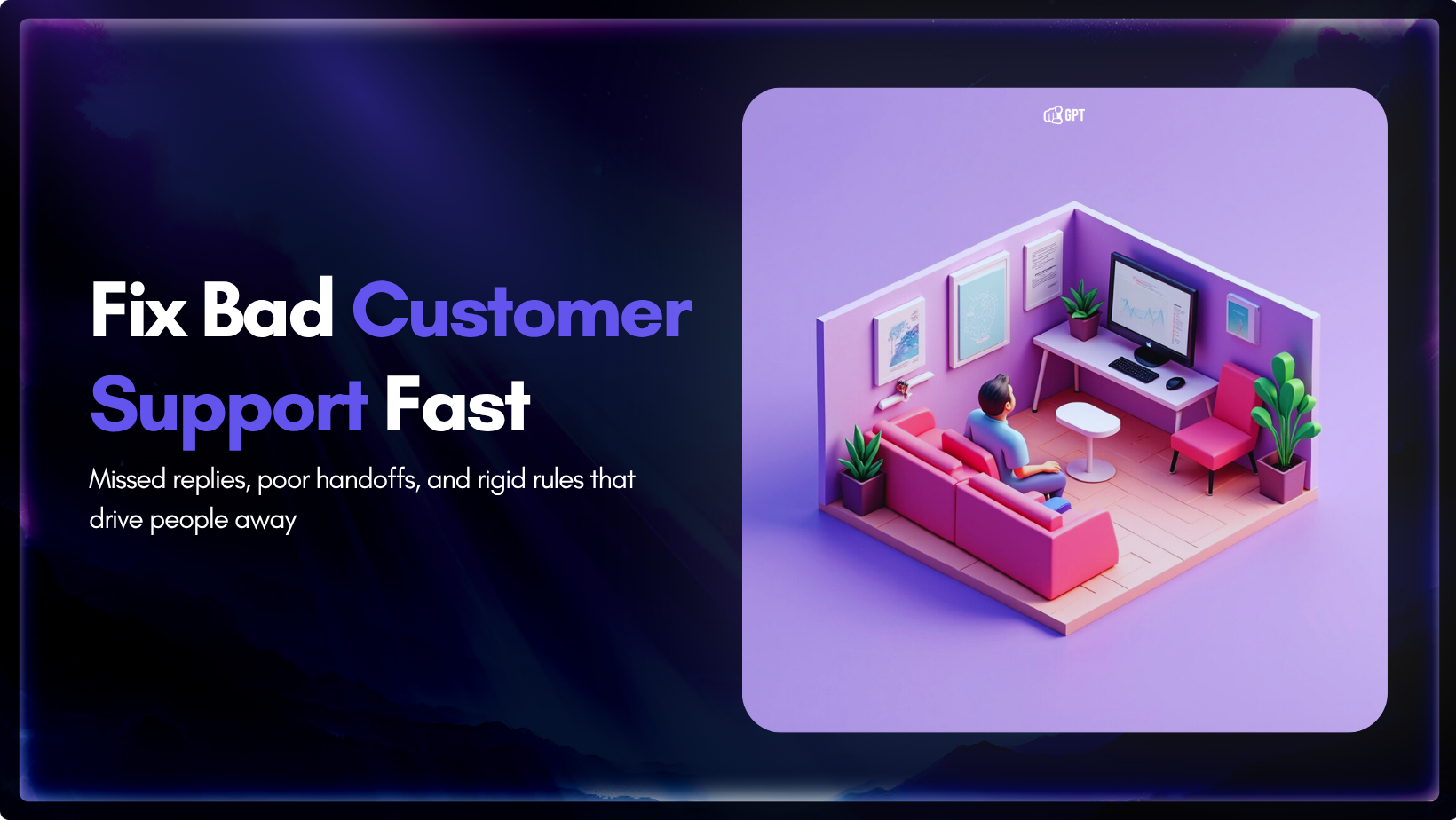
Bad customer service is one of the fastest ways to lose customers and reputation in 2025.
Research shows that more than 70 percent of buyers switch brands after two poor experiences. What looks like a small failure, such as a late reply, a rigid policy, or an unanswered complaint, can quickly become a business risk. Customers leave. Stories spread. Teams spend more time repairing issues than building loyalty.
The need to invest in customer service is already clear. The challenge is now avoiding the mistakes that frustrate customers the most.
Poor support drains revenue and increases churn. It makes scaling harder. Good support has the opposite effect. It creates trust, strengthens loyalty, and drives long-term growth.
This blog cover the most common customer service mistakes. You will see the risks they create and the practical steps you can take to fix them.
Whether you manage a small support team or lead service at scale, these insights will help you reduce complaints, protect your brand, and keep customers coming back.
Bad customer service is any experience where the support falls short of what a customer expects.
It is not limited to rude behaviour or unresolved issues. Today it includes slow replies, repeated questions, rigid policies, and impersonal communication. Even when the problem is solved, the way it is handled can still make the experience feel negative.
Customers in 2025 are used to fast, personalised, and connected service. They expect support to understand their history, respect their time, and respond with empathy. When those expectations are not met, the service is seen as poor.
Common signs include:
Each of these creates friction. Over time, that friction becomes frustration.
When frustration builds, customers don’t just leave—they often share their negative experience, causing more damage to your brand.
Bad customer service is not just a problem in the moment. It creates a chain reaction that touches revenue, reputation, and team performance.
Bad service is not just a customer problem. It is a business problem that compounds across every part of the organisation. Here’s a simple comparison:
| Aspect | Good Customer Service | Bad Customer Service |
|---|---|---|
| Response Time | Quick & reliable with minimal waiting | Delayed or inconsistent, leading to frustration |
| Problem-Solving | Clear, efficient solutions | Incomplete or ineffective answers |
| Communication | Polite, easy to understand | Robotic, confusing, or impersonal |
| Staff Quality | Well-trained, good product knowledge | Untrained, unsure about the product or service |
| Empathy | Listens and responds with care | Shows little understanding or concern |
| Ownership | One person follows through until resolved | Passed between teams, no clear responsibility |
| Feedback | Recorded and used to improve | Ignored or dismissed |
| Access | Easy to reach, multiple channels | Difficult to reach, limited options |
Great service doesn’t require perfection. It requires a genuine commitment to solving problems and treating customers with respect at every step.
If you want to build stronger customer relationships, see these practical customer service skills improvement tips for your team.
Bad customer service has left permanent marks on some of the world’s biggest brands. These are not just small mistakes but large-scale failures that became public lessons in what not to do.
In 2008, musician Dave Carroll’s guitar was damaged during a United Airlines flight. After months of unhelpful responses, Carroll released a song called United Breaks Guitars. The video went viral with millions of views, generating global media coverage.
When United Airlines refused to pay for his broken guitar, Dave Carroll released this complaint diss track.
Impact: United Airlines suffered reputational damage, stock price go down 10%, about 180 Million, and long-lasting association with poor customer care.
Lesson: The cost of ignoring one customer’s complaint can be far higher than resolving it early. 🔗 Wikipedia – United Breaks Guitars
In 2024, DPD’s customer service chatbot began swearing at customers, mocking the company, and writing negative poems about its own service. The failure went viral on social media, highlighting poor oversight of AI systems.
Impact: DPD faced widespread criticism, raising concerns about AI trust and reliability in customer-facing roles.
Lesson: AI in customer service must be trained, monitored, and tested with strictly before deploying on Production. Customers expect reliable help, not entertainment. 🔗 The Guardian – DPD AI Chatbot Incident
In the early 1990s, Hoover UK promised free international flights with purchases over £100. Demand exploded, and Hoover failed to deliver most tickets. Customers sued, the scandal dominated headlines, and executives resigned.

Impact: The fiasco cost Hoover millions and permanently damaged its brand in the UK.
Lesson: Over-promising without operational capacity destroys trust faster than almost any other mistake. 🔗 Wikipedia – Hoover Free Flights Promotion
In 2014, a customer’s attempt to cancel Comcast service was recorded and shared online. The agent aggressively resisted the cancellation, keeping the customer on the line for over several minutes. The audio went viral.
Impact: The call reinforced Comcast’s reputation for poor service and led to public apologies.
Lesson: Customers value control. Making it difficult to leave guarantees negative publicity and future resistance. 🔗 Wikipedia – Criticism of Comcast
Verizon continued billing a deceased customer’s account and demanded the account PIN before stopping charges. Even after the family provided death certificates, service agents insisted on rigid procedures.
Impact: The case drew media attention, showing Verizon as insensitive and bureaucratic.
Lesson: Empathy must guide policies. Processes that ignore human context damage trust. 🔗 CGS Blog – Customer Service Fails
In 2010, filmmaker Kevin Smith was removed from a Southwest Airlines flight for being “too large for the seat.” The handling of the incident, including public comments, created massive backlash.
Impact: Southwest faced reputational harm and was criticised for public shaming.
Lesson: Sensitive issues must be addressed with discretion and respect. Public embarrassment of customers erodes loyalty. 🔗 NPR – Kevin Smith Southwest Incident
A woman reported that Walgreens incorrectly filled her prescription, giving her the wrong medication. When she tried to contact the pharmacy for help, her calls went unanswered. Instead of receiving urgent support, she was ignored during a situation that directly affected her health and safety.
Impact: The incident highlighted how a single error in healthcare can damage trust. Beyond the personal risk to the customer, Walgreens faced public criticism for failing to provide accountability and basic responsiveness.
Lesson: Mistakes must be acknowledged immediately, and customers must always have a direct line to resolution. Ignoring calls or avoiding responsibility creates reputational harm far greater than the cost of fixing the error.
Scaling service isn’t just about adding headcount. It’s about improving speed, clarity, and self-sufficiency.
Start with these fundamentals:
The right system reduces volume, improves speed, and makes your agents’ work more focused and rewarding.
Long waits, repeated questions, rigid rules, and disconnected systems are the mistakes that frustrate customers most. Fixing them does not always require more people. It requires a system that grows with the business and makes every interaction faster, clearer, and more consistent.
Fixing bad service is about removing the friction that makes customers feel ignored. Automating repetitive tasks, making knowledge accessible, and equipping agents with the right tools enhances the entire support experience. Customers get answers faster, teams work with less stress, and the business scales without service quality dropping.
Bad customer service happens when a business fails to meet customer expectations. This includes slow responses, unfriendly or robotic communication, requiring repetition, or being difficult to contact.
Start by fixing the basics: reduce wait times, provide your team with better tools, and empower customers to solve simple problems on their own.
A single bad interaction can make a customer feel undervalued. If they sense your team doesn’t care, they’re unlikely to return.
Yes, AI can handle frequent questions, manage routine tasks, and escalate complex issues to human agents quickly and efficiently.
Be proactive. Train your team to respond promptly, clearly, and with empathy. Monitor feedback and take action to prevent recurring issues.
Helpful tools include shared inboxes, live chat, knowledge bases, chatbots, and CRMs that unify customer data.
Focus on real-world scenarios. Teach your team product knowledge, active listening, and how to stay calm under pressure.
Customer feedback reveals what’s working and what’s not. It guides improvements and helps prioritize what matters most to your users.
Escalate an issue if it can’t be resolved in two attempts or it falls outside the agent’s authority or knowledge scope.
Both have their strengths. Live chat is quicker for simple questions, while email works well for complex issues that need detailed explanations.
Customer service isn’t just about fixing problems anymore—it’s about how you handle them. People want quick responses, clear answers and a human touch, even if they’re dealing with a bot. The way a business manages these everyday conversations makes a big difference. When done well, every interaction strengthens trust.
YourGPT makes that easier. It brings together AI chatbots, a smart helpdesk, and support across channels in one place. This lets small teams respond faster, stay consistent, and help more people without adding more staff. Instead of juggling tools, they focus on helping customers—and doing it well.
https://yourgpt.ai/blog/general/10-proven-ways-to-deliver-excellent-customer-service
Use YourGPT to respond faster, handle more conversations, and build real trust—without overloading your team or switching tools.
No credit card required • Full access • Cancel anytime
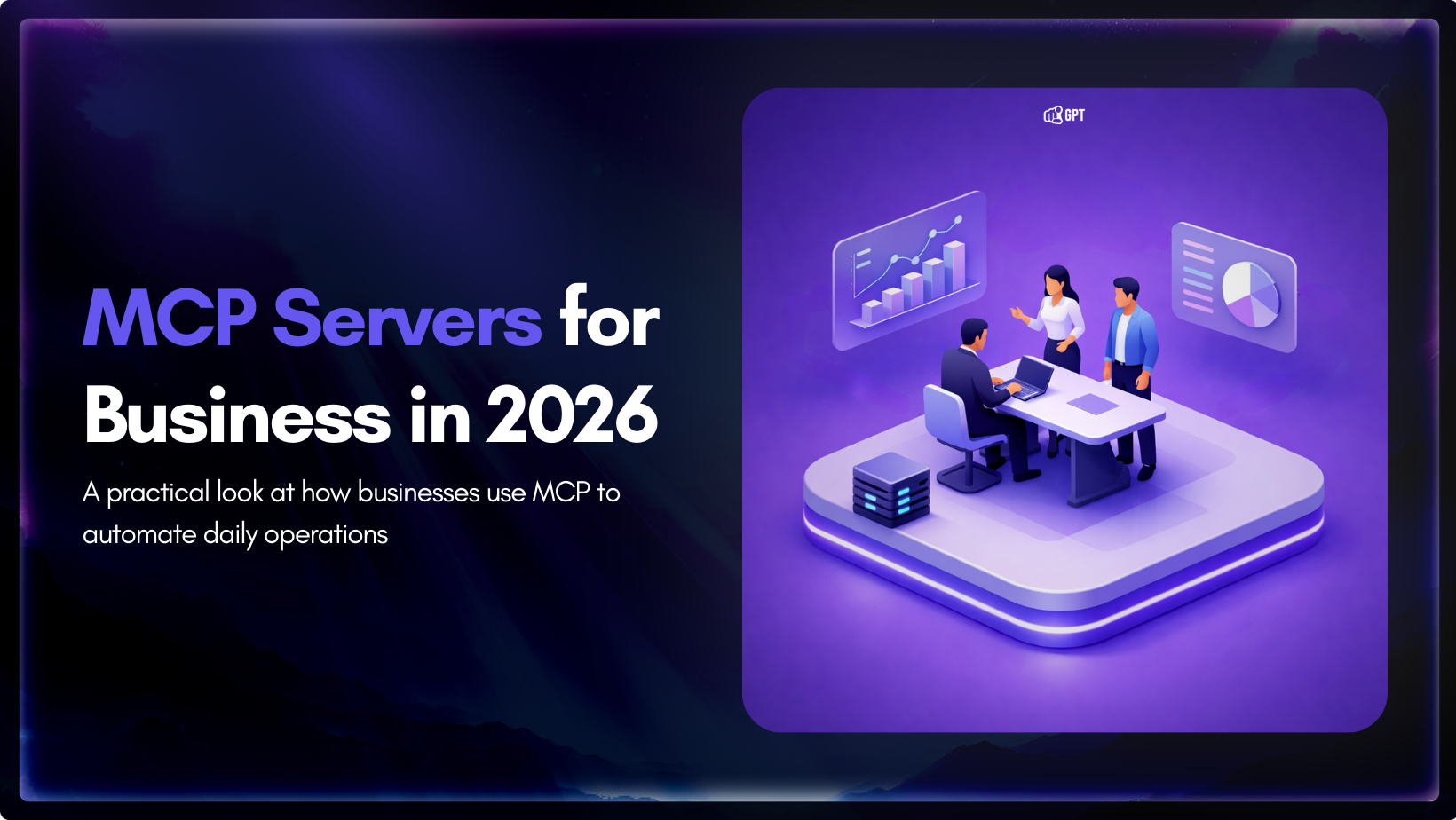
Growth-focused teams move faster when their tools work together instead of competing for attention. Modern development depends on multiple systems to ship code, review changes, monitor services, and access data. Each system serves a purpose, but routine work often means moving between dashboards, scripts, and internal tools. These small transitions shape how consistently a team […]

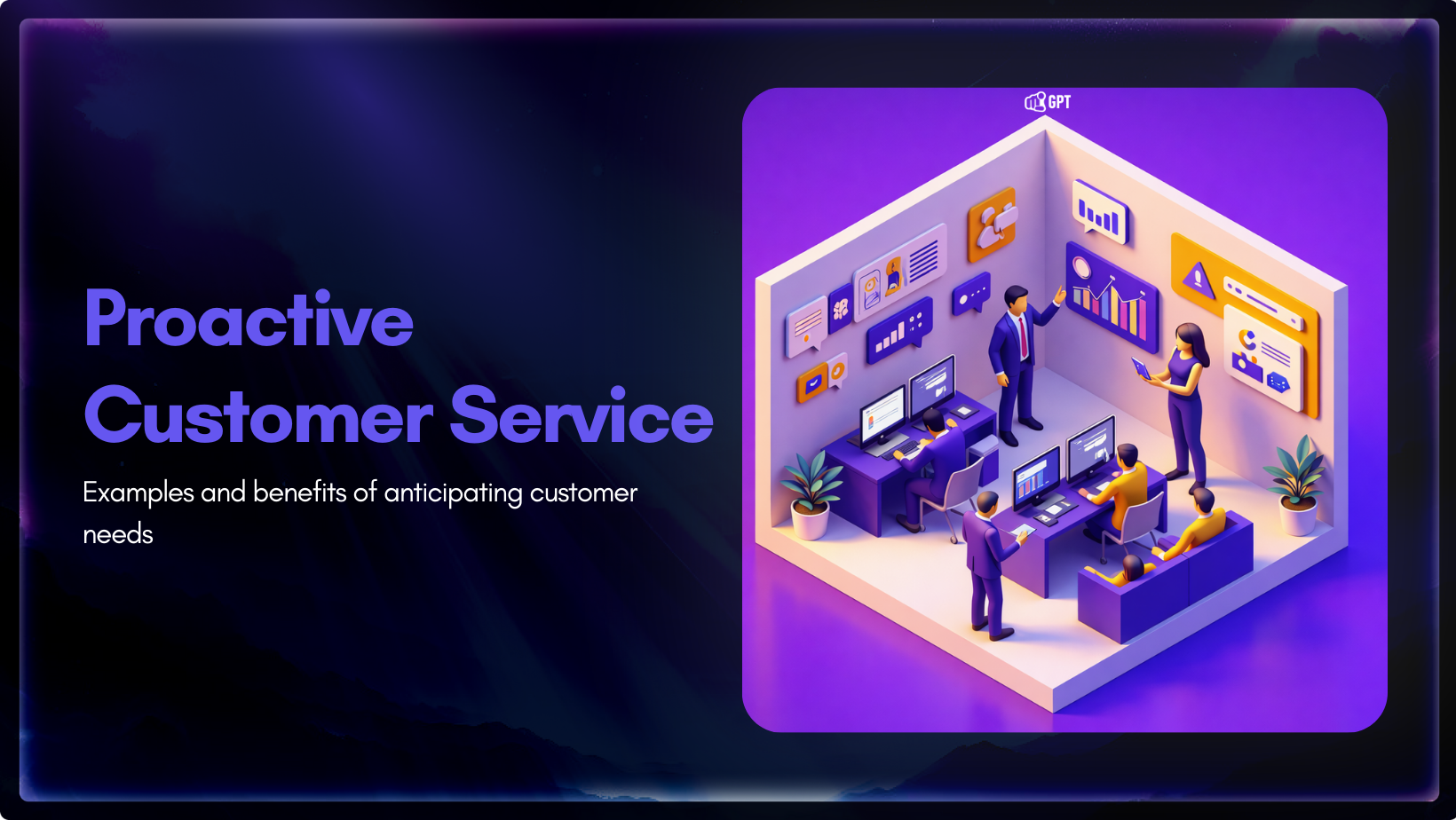
Most customer service moments begin long before a ticket is created. Something feels off. A payment does not go through. A delivery update stops moving. A user gets stuck at the same step and tries again. Customers usually pause, check, retry, and wait before they decide to ask for help. Proactive customer service works inside […]

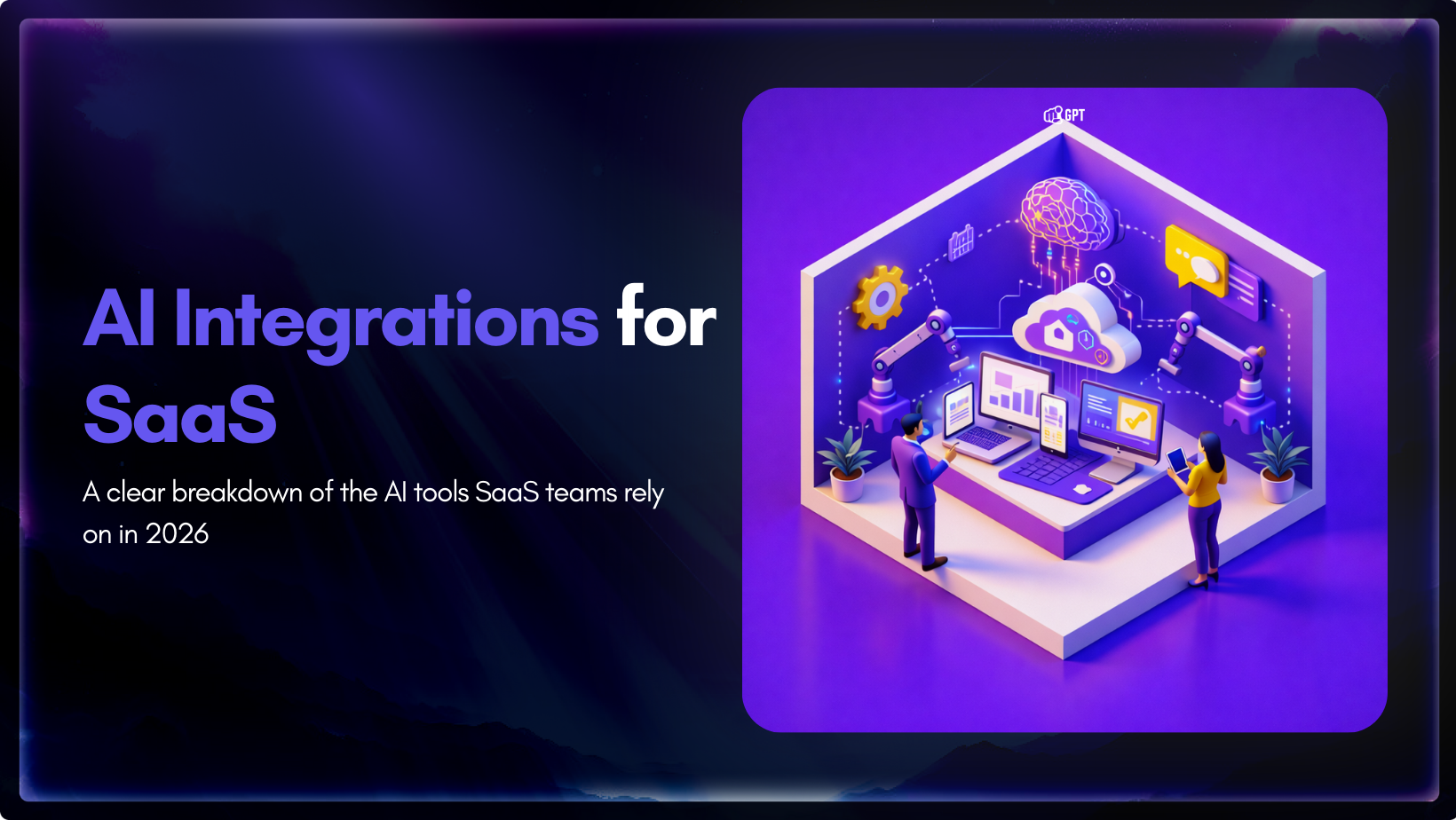
AI has become a core part of how modern SaaS products are built and delivered. In 2026, customers expect intelligent assistance to be available throughout their journey, from onboarding and everyday product usage to support and account management. Inside SaaS teams, AI is increasingly used to speed up workflows, reduce repetitive tasks, and improve how […]

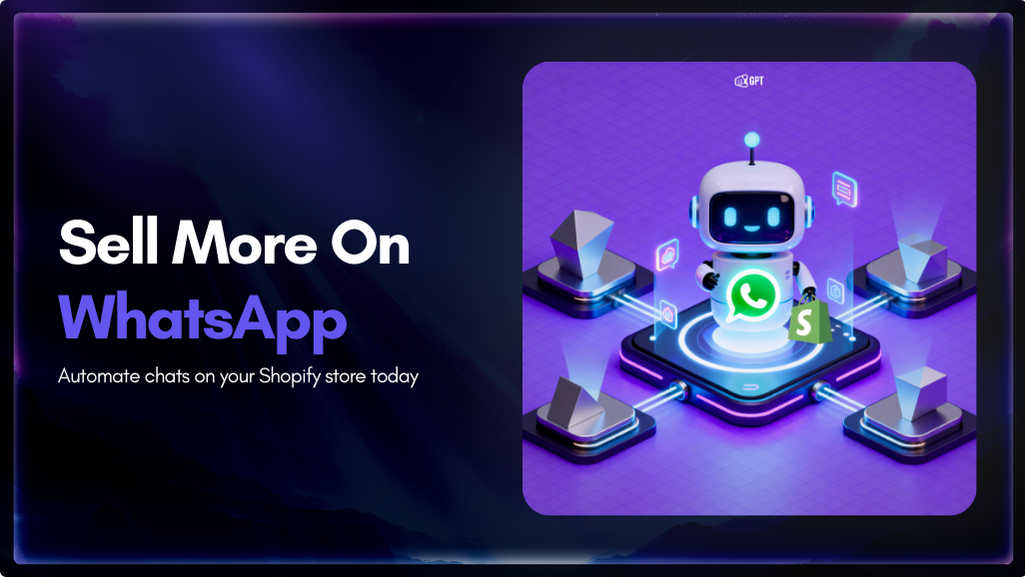
Shopify stores often use a chatbot on their website to handle product questions, order updates, and support. But customers also message on WhatsApp expecting the same quick answers. Most of them already use WhatsApp throughout the day, so reaching out there feels natural. A chatbot that works across both channels responds in seconds, guides purchase […]

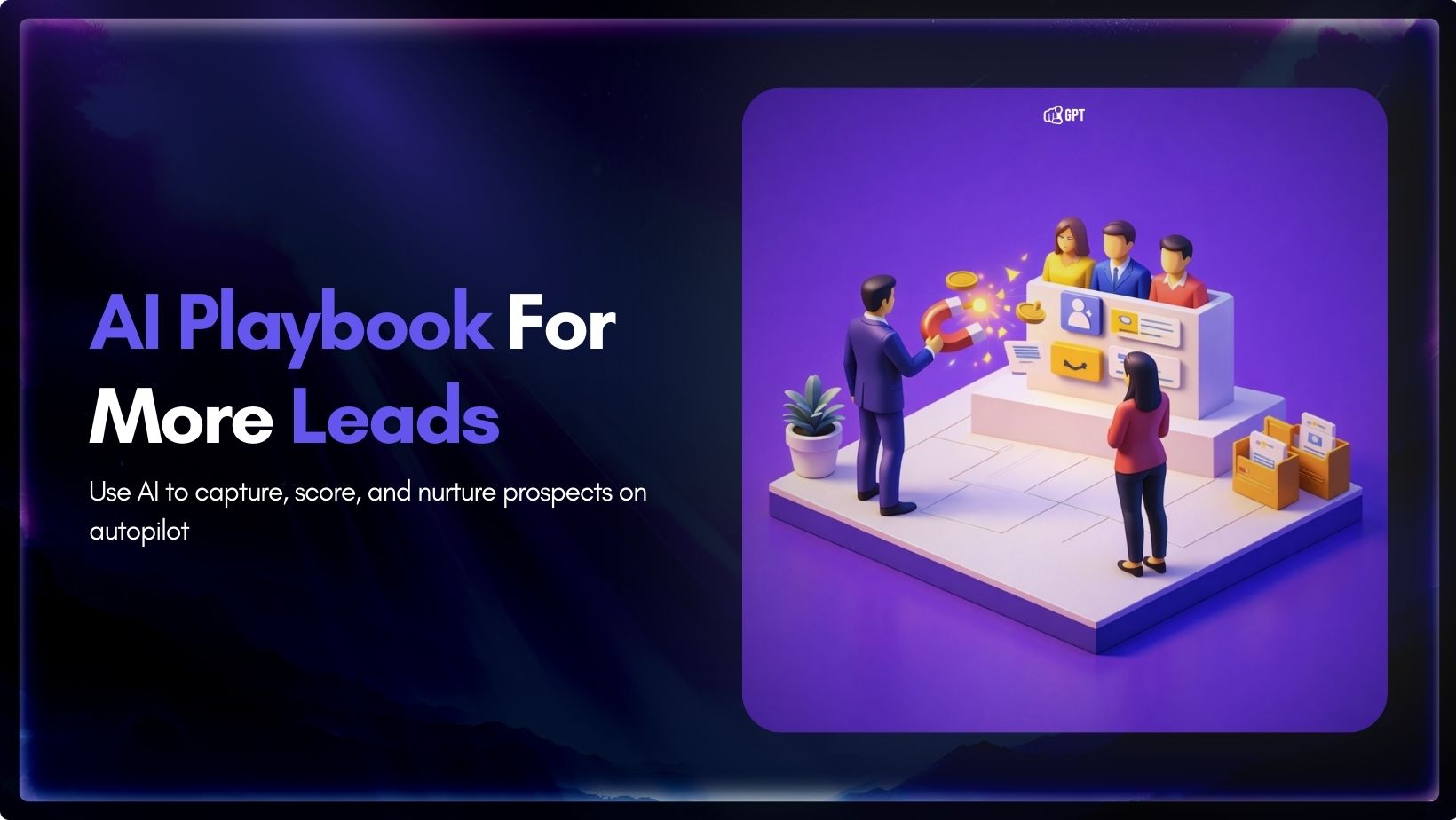
Most businesses do not struggle to generate leads. They struggle to know which ones are worth acting on. Forms get filled, DMs arrive, emails are opened, and chats happen across multiple tools. Some prospects convert. Most do not. The real problem is that there is no reliable way to tell, early enough, which signals actually […]

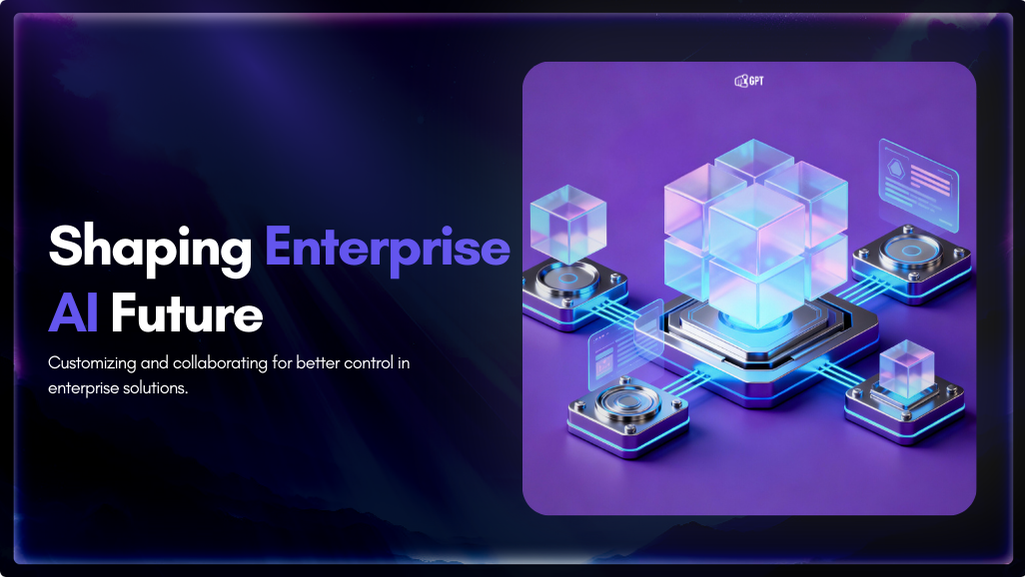
Artificial Intelligence has advanced quickly over the past five years, moving from an experiment to a standard component of modern business. AI has become a central part of enterprise strategy. 88% of organizations are now using AI. This figure has increased from 78% the year before. This transformation is reshaping how companies run, communicate, and […]
